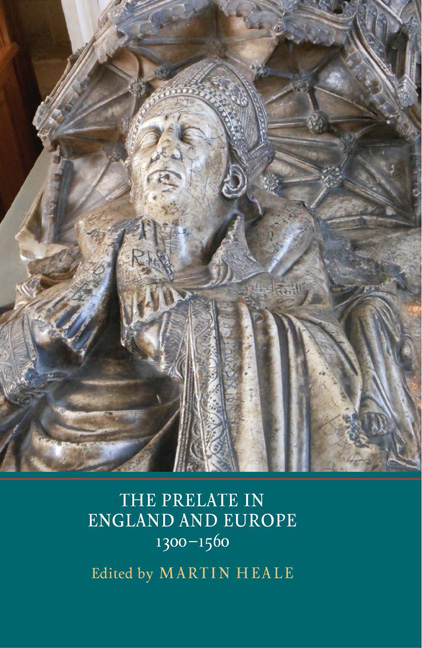Book contents
- Frontmatter
- CONTENTS
- List of Illustrations
- List of Contributors
- Preface and Acknowledgements
- List of Abbreviations
- Introduction
- Part I Prelates and Power
- The Clerical Chancellors of Late Medieval England
- Prelates and the Alien Priories
- Cardinals at the Court of Francis I
- Part II Patronage and Learning
- Part III Identity and Display
- Part IV Attitudes towards Prelacy
- Index of People and Places
- Index of Subjects
- YORK MEDIEVAL PRESS: PUBLICATIONS
The Clerical Chancellors of Late Medieval England
from Part I - Prelates and Power
Published online by Cambridge University Press: 05 November 2014
- Frontmatter
- CONTENTS
- List of Illustrations
- List of Contributors
- Preface and Acknowledgements
- List of Abbreviations
- Introduction
- Part I Prelates and Power
- The Clerical Chancellors of Late Medieval England
- Prelates and the Alien Priories
- Cardinals at the Court of Francis I
- Part II Patronage and Learning
- Part III Identity and Display
- Part IV Attitudes towards Prelacy
- Index of People and Places
- Index of Subjects
- YORK MEDIEVAL PRESS: PUBLICATIONS
Summary
Introduction
In September 1376, just two months after Edward III's unpopular courtiers had been humiliated in the Good Parliament, the great and good of the realm were summoned to attend a meeting of the royal council to participate in what must have seemed to be a distinctly peculiar affair. The meeting had been called to allow the ‘victims’ of the Good Parliament, foremost among whom was John of Gaunt, duke of Lancaster, to exact their revenge on William Wykeham, bishop of Winchester. As Thomas Walsingham put it, in his own inimitable style,
the duke disgorged the devilish venom pent up within him, and discharged the stings of his malice against the bishop … he was looking for a knot in a bulrush, and an opportunity to harm him in any way or by whatever means he could.
The peculiar quality of these proceedings lay in the fact that the accusations levelled against Wykeham did not concern his more recent participation in the tumultuous events of the Good Parliament, where he had taken an active role in the trial of the disgraced courtiers and had also been appointed as a member of the reform council. Instead, they related to misconduct which he had committed over five years previously when he had been serving as chancellor.
- Type
- Chapter
- Information
- The Prelate in England and Europe, 1300–1560 , pp. 17 - 49Publisher: Boydell & BrewerPrint publication year: 2014



